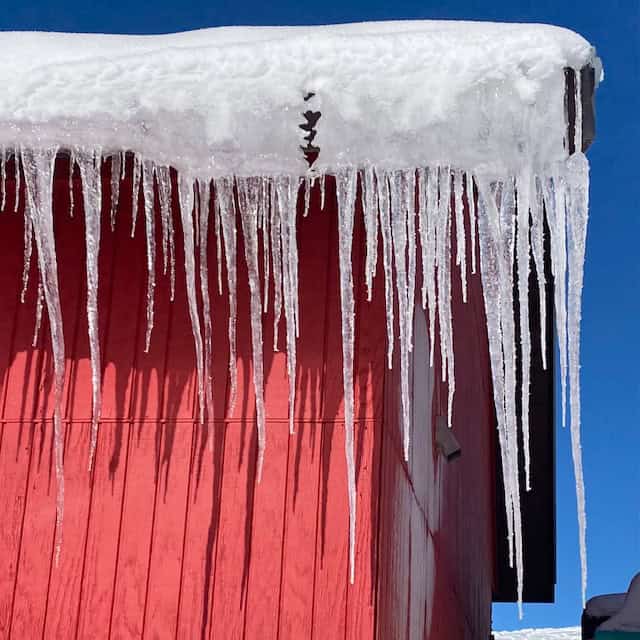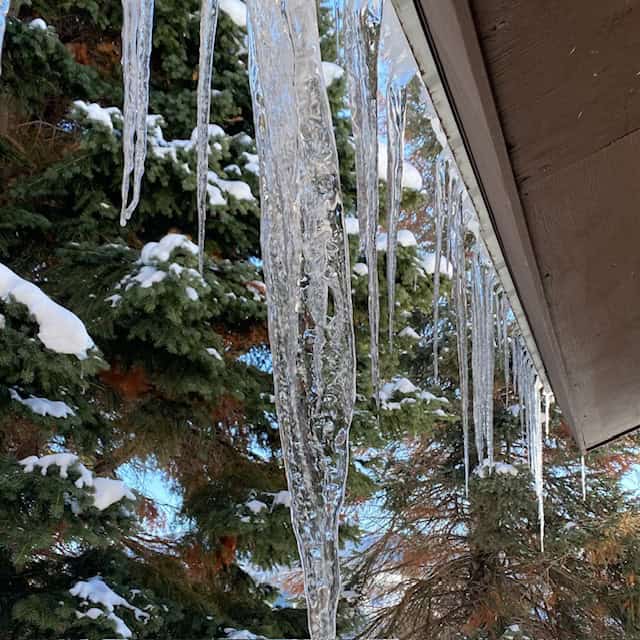Aesthetically, icicle formation is one of nature’s gifts in the winter. Although they are pretty, they can cause some damage too. Read on to find out more about these amazing ice formations.
Icicle Formation
Icicles usually form on bright, sunny days when the temperature is below freezing. There are three common ways that icicles form. First, melting ice or snow drips down and refreezes before it detaches from it’s source. Second, sometimes the atmosphere is above freezing resulting in rain. Conversely, the air is freezing or below near the ground. As the water/rain falls, it collects on objects turning into ice. It melts, drips, and refreezes forming an icicle. Finally, during freezing or below freezing air temperatures, water can seep from vertical slopes. As it drips, it forms the characteristic shape. In this scenario, the ground water is not yet frozen, but it quickly freezes when it seeps out and comes in contact with the air.
What impacts the surface texture of an icicle?
Ot all icicles are smooth. Some have ridges and some are bumpy on the sides. Ever wonder why? There are several reasons. First, lets talk about the conditions that form the smoothest specimen. Ideally the water would run straight down. This makes the drip and freeze the most perfect. When the melting water makes turns and twists, or it comes from multiple sources, the texture reflects this. Last but not least, if the water is not pure, meaning that it has some impurities or specific mineral content, it may not freeze smooth.
Dangers
Icicles can get quite large. If they fall off and hit a person or a structure, they can cause damage. Also, large ones can weigh a lot. If they are hanging on structure, such as gutters, this can pull the gutter off or loosen it. Removing Icicles seems easy. There are a few things to keep in mind. The base of the structure may not detach easily when you try to remove it. The block of ice at the base may pull or damage what it is attached to when it comes off. Also, always be aware of where the ice will fall. It can damage structures as well as trees and plants.

